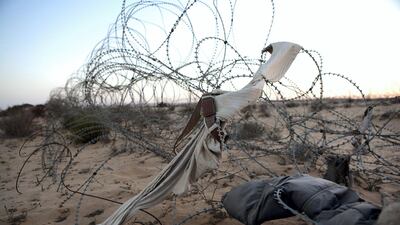Through decades of war Eritrea has maintained one major export – refugees.
But there has been a rapid thaw in relations since the war was declared over on July 9, which it is hoped will plug the river of misery and encourage those forced abroad to return - perhaps many with vital skills both countries need.
Ethiopian Prime Minister Abiy Ahmed and Eritrean President Isias Afewerki recently have visited one another's capitals to be welcomed by thousands of cheering crowds. Embassies have reopened, phone lines between both nations are restored and flights have resumed.
But other obstacles lie ahead. Millions of dollars will be required to support Ethiopia and Eritrea, which are among the world's 47 least developed countries, according to the UN, Ahunna Eziakonwa, head of the UN in Ethiopia, told Reuters.
______________
LATEST: Ethiopian and Eritrean leaders meet in Abu Dhabi

______________
She said this included removing thousands of landmines along the 1,000km border and rebuilding roads and other infrastructure for easy cross-border trade and movement.
Thousands of young people in both nations are expected to be demobilised and there will be an urgent need to provide them with jobs, she said.
"One of the biggest challenges is how to engage the youth in both countries in gainful employment and we need partners such as the international community and private sector to rally behind this new opportunity," said Ms Eziakonwa.
"Obviously, you don't want a whole lot of idle youth. They need to see the dividends of peace and that will largely be born out when we see the kinds of investments that integrate them into the economy."
According to the UN, Eritrea has been one of the largest contributors to the human tragedy of refugees struggling to move north. In 2015, for instance, Eritreans made up the single largest group of people crossing the Mediterranean to Italy.
Mostly, the arrivals cite the minimum 18 months of mandatory national service as their reason for fleeing their homeland. Conscripts often are forced to stay longer – for years even, before being allowed to return to civilian life.
Some are assigned to civil service positions, while most are placed in military units, where they effectively work as forced labourers on private and public works projects. Others risk dying in trench warfare with Ethiopia, a conflict that has already claimed as many as 100,000 lives.
“Abuse in national service is rampant and is the principal reason why thousands flee the country annually,” Human Rights Watch says.
Eritrea itself came into being in 1993, following a UN backed referendum. Until then, it had been part of Ethiopia but had fought a fierce guerrilla war against Addis Ababa for decades. Following independence Eritrea built up one of Africa’s most formidable militaries.
In 1998 a full-scale war broke out over ownership of the border town of Badme. A shaky truce was signed in June 2000, although intermittent skirmishes have erupted ever since.
_______________
Read more:
Will the 'bridge of love' prosper between Eritrea and Ethiopia?
Refugee chefs take over US kitchens to offer a taste of home
_______________
With a population of only 5 million people, compared to in excess of 100 million in Ethiopia, Eritrea’s military had to draw on enforced conscription to fill its ranks. This partially explains an unusual feature of Eritrean armed forces - the full integration of women into combat units including infantry, artillery and armoured regiments.
Many young citizens fled rather than endure the harsh terms of conscription. At a rate of up to 4,000 a month, according to the UN High Commission for Refugees. According to Open Migration, an EU-based charity, most end up in Germany, the Netherlands, Sweden and especially Switzerland where they are the largest group of asylum seekers.
At least 160,000 are also living in Ethiopia in makeshift camps.
With the outbreak of peace, many will be hoping extended conscription will soon become a thing of the past.

